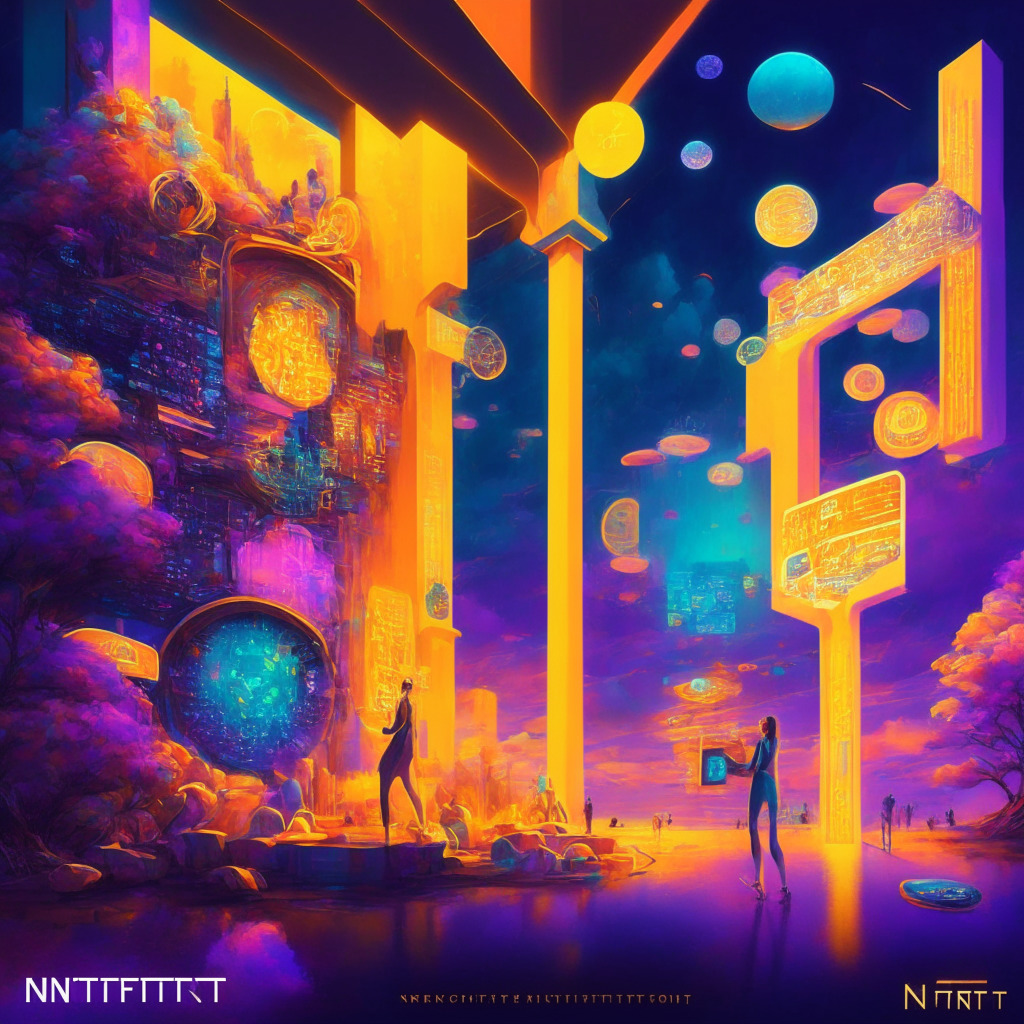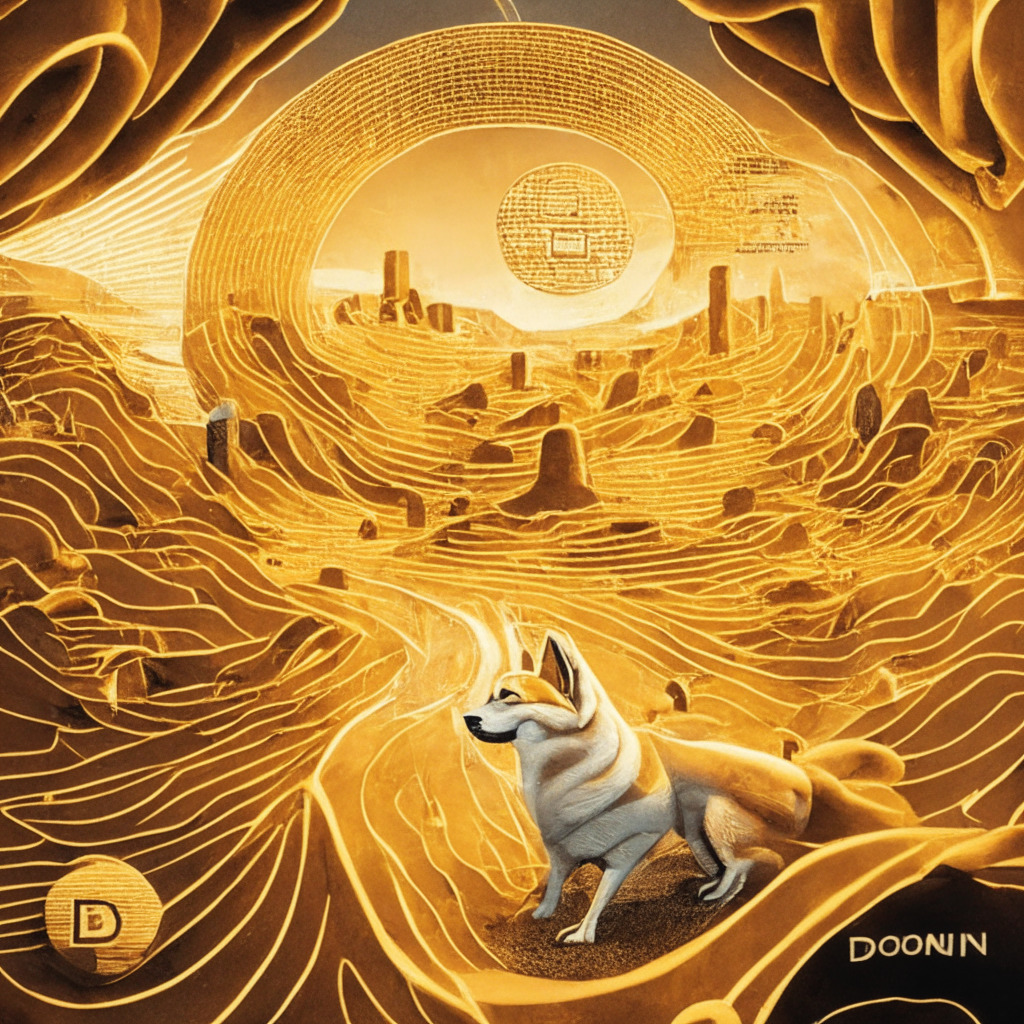In May, Bitcoin experienced its first monthly loss since December 2022, but indicators like the futures market and VC investment reveal underlying optimism. Mining stocks showed notable gains, while VC investment surpassed $1 billion for the first time since September 2022. Increasing network activity and recent feature additions suggest the crypto market may be gradually regaining momentum.
Search Results for: BRC-20
Bitcoin’s Purpose Debate: Digital Gold vs Activist’s Tool and the Impact on Regulatory Policies
The rise of institutionalization in the cryptocurrency world has prompted debate regarding Bitcoin’s purpose. Wall Street may adopt the “digital gold” narrative, representing Bitcoin as an asset independent of monetary policy. However, the chosen narrative could influence regulatory policy and may indirectly curtail Bitcoin’s usage growth, impacting privacy and KYC rules.
Ethscriptions vs Bitcoin Ordinals: The Battle for NFT Creation Supremacy
A new protocol called “Ethscriptions” has landed on Ethereum, offering an affordable and decentralized way to create non-fungible tokens (NFTs) and digital assets on the blockchain. Developed by Genius.com co-founder Tom Lehman, Ethscriptions utilizes Ethereum’s “calldata” in smart contracts for a more affordable minting process.
CryptoPunk Burned and Linked to Bitcoin: NFTs, Ordinals, and Ownership Debates
CryptoPunk #8611, a highly-priced Ethereum NFT, was burned and symbolically linked to a Bitcoin Ordinals inscription. This community-led effort from Bitcoin enthusiasts showcases the growing popularity and dynamic potential of NFTs and Bitcoin, raising questions about asset ownership and legitimacy.
Bitcoin’s Fee Spike and Ordinals Protocol: Innovation or System Abuse?
The Bitcoin network’s transaction fees have surged due to the new “Ordinals” protocol, enabling non-fungible tokens and other applications. This has led to debates among developers regarding its impact on the network’s functionality, congestion, and the balance between innovation and transaction moderation.
Bitcoin Downturn Amid US Debt Ceiling: Impact and Future Predictions Explained
Bitcoin experiences a downturn below $27,000 as investors assess U.S. debt ceiling deal and employment report impacts. JPMorgan research anticipates strong retail demand up to the next halving event in 2024, while Binance’s new appointment, Richard Teng, focuses on navigating regulatory challenges and bolstering the exchange’s legitimacy.
Bitcoin Halving 2024: Retail Demand Soars, Institutional Interest Wanes – Who Will Win?
JPMorgan’s recent report suggests strong retail demand for bitcoin will likely continue, driven by anticipation of the April 2024 halving event. Meanwhile, institutional demand appears to be waning due to factors such as fraud, increased volatility, and regulatory crackdowns. This divergence raises questions about bitcoin’s long-term value trajectory.
Predicting Bitcoin Transaction Fees: The New Crypto Crystal Ball
Rather than focusing on short-term price predictions, this article suggests examining Bitcoin transaction fees as they naturally increase with emerging use cases and growing interest in cryptocurrency. As layer-1 applications evolve, understanding and predicting fees could benefit the entire Bitcoin community, driving growth and innovation.
New Mining Investments Amidst 44% Decline in Bitcoin Profits: Examining Resolute Companies
Despite a 44% decline in Bitcoin mining profitability over the past year, companies like CleanSpark continue to expand, with CleanSpark recently purchasing 12,500 Antminer S19 XP units for $40.5 million. As mining difficulty reaches an all-time high, the industry demonstrates resilience and optimism, aiming for greater efficiency and productivity.
Chatting with Satoshi: AI Bot Talk2Satoshi Sparks Insight and Confusion in Crypto Community
Pierre Corbin and Hugo Ferrer have created “Talk2Satoshi”, an AI chatbot designed to answer questions about Bitcoin and economics as if from Satoshi Nakamoto. Based on OpenAI’s ChatGPT, it demonstrates AI tools’ potential for education, encouraging healthy discussions among crypto enthusiasts despite occasional uncertainties and contradictions.
The Shaky Future of Bitcoin: Examining Market Fluctuations, Adoption, and Crypto Utility
Bitcoin faces a 6.5% monthly drop but maintains a 68% year-to-date gain. To attract more investment, real utility and development must be demonstrated, according to John Wu, president of Ava Labs Inc. Increased network activity, including BRC20 standard Bitcoin Ordinals and NFTs, has impacted transaction fees and network congestion.
Bitcoin Mining Difficulty Soars: Impact of Ordinals Protocol and Upcoming Halving Dilemma
Bitcoin mining difficulty is set to reach a new record high of 50.91 trillion, reflecting the growing number of mining machines. This surge occurs alongside the Bitcoin network’s hashrate rally and increased network fees, resulting in boosted profitability for miners. With the Ordinals protocol enabling NFTs and BRC-20 tokens on the Bitcoin blockchain, demand for block space increases, maintaining high network fees and incentivizing more miners to join.
Bridging NFTs to Bitcoin Blockchain: BRC-721E Standard Sparks Debate on Efficiency and Potential
The launch of Bitcoin Ordinals’ BRC-721E standard enables the transfer of Ethereum’s ERC-721 NFTs to the BTC blockchain, opening new possibilities for token minting. However, critics argue the process is inefficient, making it essential to maintain a balanced viewpoint on emerging technologies.
Dogecoin Surpasses Ethereum and Bitcoin in Transaction Volume: A Joke Turned Competitor?
Dogecoin, once a joke, now surpasses Ethereum and Bitcoin in transaction volume, handling over 7.9 million transactions due to Bitcoin Ordinals, a layer-2 solution similar to NFTs. With competitive fees and rapid adoption of NFT-like features, Dogecoin demonstrates the potential as a serious blockchain competitor.
Ethereum Meets Bitcoin: Ordinals Protocol Sparks Collaboration and Controversy
Ethereum developers show interest in Ordinals, a new protocol gaining attention in the Bitcoin community. OrdinalSafe, a self-custodial Bitcoin wallet, illustrates the growing convergence between the two crypto communities. However, some Bitcoiners question Ordinals’ potential network strain and increased transaction fees from BRC-20 tokens.
Exploring RGB Protocol as a Solution to Bitcoin’s Block Space Issues and Ordinal Impact
The RGB Protocol could solve Bitcoin’s block space problems caused by rising Ordinals popularity, without impacting transaction fees, according to Gideon Nweze, founder of Digital Bitcoin Art and Assets. RGB enables encrypted transactions with Lightning Network functionality, offering a more efficient solution for minting NFTs in the Bitcoin ecosystem.
Bitcoin NFTs and Meme Tokens: Boon for Adoption or Network Congestion Nightmare?
Bitcoin-based NFTs and meme tokens experience soaring popularity as Ordinals inscriptions reach 9 million. The Bitcoin Ordinals protocol enables inscribing digital artifacts, drawing criticism for misuse and increasing network congestion. Despite concerns, it serves as a catalyst for Bitcoin adoption and expansion into other cryptocurrencies.
Stably USD Stablecoin’s Impact on Bitcoin Trading: Potential Game Changer or Just Hype?
The new dollar-backed stablecoin, Stably USD, designed for the on-chain Bitcoin economy raises questions about the future of digital asset trading. Developed by crypto startup Stably, this BRC-20 token aims to simplify trading in ordinals, offering a more efficient and cost-effective alternative to fiat currency or Bitcoin. Skepticism remains whether it will significantly impact the market.
Bitcoin’s Price Crossroads: Regulatory Concerns, Long-Term Hodlers, and NFT Markets
Bitcoin’s price faces a downward trend, potentially breaking the $26,800 support level, raising concerns among investors. Meanwhile, Cathie Wood critiques the SEC’s treatment of digital assets, and Hong Kong’s retail trading announcement sparks market optimism. Bitcoin users hold long-term, maintaining confidence in its future prospects.
Ordinals Protocol Shifts to Litecoin & Dogecoin: Impact on Network Activity and Future Challenges
The Ordinals protocol, initially aimed for the Bitcoin network, has shifted to Litecoin and Dogecoin, resulting in a significant increase in transaction volume on both networks. The introduction of LRC-20 and DRC-20 token standards allowed users to create new memecoins, driving network activity. Balancing benefits and drawbacks is essential for understanding this technology’s impact on the blockchain ecosystem.
Bitcoin Ordinals Boom: Surging Fees, Growing Popularity, and Unfolding Debate
The total network fees paid for Bitcoin Ordinal minting reached 1,414 BTC ($38.2 million) on May 20, a 700% increase from April 20. Bitcoin Ordinals, developed by cross-chain wallet BitKeep, assign unique numbers to Satoshis, enabling one-of-a-kind digital assets using Bitcoin. However, this approach comes with challenges and limitations, raising concerns over Bitcoin’s evolution and long-term impact on the blockchain ecosystem.
Axie Infinity App Store Debut, NFT Trends, and AI Regulation: Debating Blockchain’s Future
This week’s blockchain news covers Axie Infinity’s App Store launch and a fluctuating NFT trading volume, highlighting the triumphs and challenges in this growing ecosystem. As crypto projects make headlines, staying informed on developments is essential for enthusiasts, traders, and investors.
Exploring Bitcoin-Based NFTs: DIBA Marketplace, RGB Smart Contracts, and the Future of Digital Assets
DIBA, a new marketplace for exchanging Bitcoin-based non-fungible tokens (NFTs), offers trading on layer 2 networks like the Lightning Network. Using “Really Good for Bitcoin” (RGB) smart contracts, DIBA aims to enable cheaper, more private transactions and simplify token issuance on Bitcoin.
Litecoin Rallies 15% Amid Stagnant Market: Exploring Causes and Potential Decline
Litecoin (LTC) has surged 15% within seven days, reaching a one-month high of $95. The price rally places LTC as the second-best performing digital asset with a market cap of over $1 billion. The increase may be due to congestion on the Bitcoin network, prompting traders to seek cheaper alternatives like Litecoin.
Bitcoin’s Z-Score Dips Below 1.0: Opportunity to Invest or Cause for Concern?
Bitcoin’s Z-score to its 200-Day Moving Average (200DMA) dropped below 1.0, signaling weakened price momentum. Factors such as US crypto regulation uncertainty, possible interest rate cuts, and surging transaction fees contribute to this decline. However, a Z-score close to 1.0 could present a good medium to long-term buy signal, as macro conditions are expected to improve and technical indicators suggest a new bull market.
Ether Struggles Amid Regulatory Pressure, Market Shifts, and Liquidations
Ether price experienced a decline after Chinese regulators targeted the NFT market and UK lawmakers pushed for crypto regulation. Factors affecting Ether’s price include Ethereum leveraged liquidations, shifting regulatory focus, and increased deposits on centralized exchanges, leading to uncertain expectations for 2023.
Dogecoin’s All-Time High Transactions: Sustainable or Just a Fad?
As Dogecoin reached a new all-time high of 719,000 daily transactions, driven by the launch of the DRC-20 standard enabling meme coin creation, concerns arise about its sustainability. Dogecoin core developer, Patrick Lodder, warns that under-engineering and lack of functionality might lead to a quick demise of the trend.
Solana’s Surge in Users: Impact on Crypto Markets, Alternatives & Investment Strategies
Solana network has seen a spike in daily users due to its high transaction throughput and low gas fees, reaching almost 400,000 active users. As Bitcoin and Ethereum face congestion, lower-cost alternatives like Solana prove viable, suggesting strong potential for medium-term growth. Diversifying investments and exploring high-risk-high-reward options, such as crypto presales, is crucial for sustained success in the evolving market.
Dogecoin’s DRC-20 Token Boom: A DeFi Pathway or Network Congestion Risk?
Dogecoin’s daily transaction volume briefly surpassed Bitcoin and Litecoin due to the introduction of the DRC-20 token standard, paving the way for potential decentralized finance services on its blockchain. However, critics argue this may lead to network congestion and high fees, impacting its adoption as an everyday currency.
Taproot Assets Protocol: Revolutionizing Asset Minting on Bitcoin Blockchain
Lightning Labs introduced an updated Taproot Assets Protocol aiming to provide a more efficient way for Bitcoin users to mint new assets on the blockchain. The protocol operates “maximally off-chain” to prevent network congestion, allowing faster and cheaper transactions, and potentially creating a more stable and scalable environment for token creation and transfers.
Bitcoin vs Ether: Decoupling Debate, Halving Effects, and Emerging Market Trends
Crypto market confidence is recovering, with Cobo’s AUC returning to November 2022 levels. The debate on Bitcoin’s role as a store of value or risk hedge continues, while Bitcoin-ether correlation drops to 77%.
Rebranding Post-Lawsuit: Taproot Assets Revolutionizes Asset Transfers on Bitcoin Blockchain
Lightning Labs has rebranded its Taro project to Taproot Assets after a trademark infringement lawsuit and released a software update. Taproot Assets aims to allow users to issue assets like stablecoins on the Bitcoin blockchain and is currently available on a test network with main network support coming soon. The company’s ultimate goal is to enable Bitcoin-based asset transfers over the Lightning Network.































